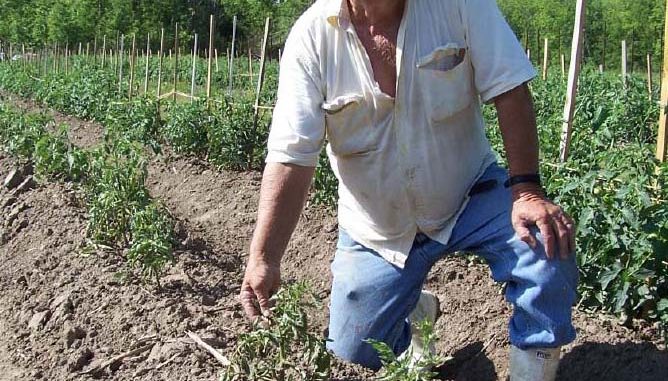
Record drought still spells trouble for ranchers, farmers and aggravates water shortage
Wednesday’s substantial rain may have staved off a critical drought in parish. However, the driest spring in decades could cause major losses for ranchers and farmers if more rain doesn’t come soon, according to County Agent Renee’ Schmit. In addition, chronic water shortages on both banks could occur if residents increase usage because of the drought, says Department of Waterworks Director Robert Brou.
St. Charles Parish and much of South Louisiana is enduring a drought that traces back as far as a year or more. “We are approaching a critical time for farmers and cattlemen. This is the time of year that farmers look for a good summer crop. Cattlemen harvest hay in the summer and without sufficient rain, the next few weeks could be critical,” said Schmit.
“Parts of the state have been suffering for quite some time now,” said Jay Grymes LSU AgCenter climatologist. “In the southern third of Louisiana, the dry spell goes back to the beginnings of 2005, and even sections of northern Louisiana have been dealing with dry weather over the past 12 of 14 months,” said Grymes.
The only two exceptions were August and September, which correspond to Hurricanes Katrina and Rita. South-central and southeastern Louisiana are showing a similar drought trend for the past year.
“This past March was one of the driest — if not the driest — Marches on record for a large portion of South Louisiana, and this extremely dry spring weather has persisted through the first half of April, as well,” said Grymes. He is concerned about the next six to eight weeks, because spring rains, which generally recharge soil moisture, haven’t happened.
“Unfortunately, in Louisiana, it’s not raining and farmers are suffering,” Agriculture and Forestry Commissioner Bob Odom said after the Weekly U.S. Drought Monitor showed that much of the state to be in a severe to extreme drought.
Odom cites hurricane damage, extremely low prices for rice, salt contamination in soils and streams, unusually high temperatures and poor soil moisture as the culprits in this year’s string of bad luck for the state’s farmers. “I try to be a ‘glass half full’ kind of guy, but in this situation you have to be realistic. Times are tough for farmers and that means the state’s economy and our rural communities are going to take a hit that will be felt from the farm to the big city,” Odom said
“The drought the parish is experiencing is beginning to show signs of plant stress on various landscape plantings through out the area. Lawns are showing the greatest effect from the drought and will continue to suffer with an absence of rain and in combination with high temperatures. In response, lawns seem to be showing more weeds than normal, especially weeds that are highly drought tolerant, such as Virginia Buttonweed and Dallisgrass,” said Schmit.
Lawns need attention too, said LSU AgCenter horticulturist Dr. Tom Koske. He recommends mowing lawns at a higher cutting height that is still within recommended limits. Koske also recommends holding off on applying fertilizer until the soil has enough moisture to sustain growth.
“The main consideration in dealing with the current drought situation is to be sure and water as needed but to provide enough water that supplies an adequate amount of moisture down to the root zones. Landscape beds may need to be watered one or two times weekly and lawns possibly two or three times weekly. Vegetable gardens may need to be watered every two or three days,” said Schmit.
Along with drought concerns, St. Charles Parish is currently experiencing a water shortage. Robert Brou of the St. Charles Water Works cautions residents on both banks of the Mississippi River to limit their water usage for watering lawns and landscaping the time being. “There are currently no restrictions on watering lawns for now, but that could change in the coming weeks if there is not a significant rain fall in the parish,” said Brou.
The experts agree, the crops of Southeastern Louisiana are in trouble. The next few weeks will determine the outcome of this year’s crops.




Be the first to comment